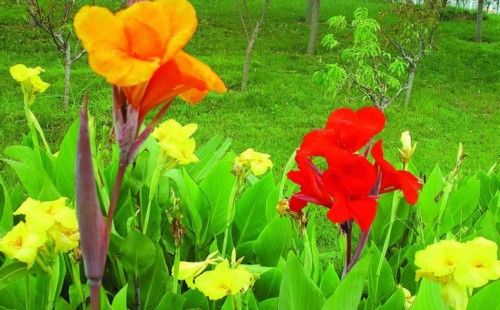How to plant impatiens seeds
Impatiens often use the way of sowing to breed potted young plants, so if you want to sow seeds, you need to harvest seeds in advance. When the impatiens fruit is ripe, the fruit clip will bounce open, thus bouncing the seeds around. If you want to harvest fully ripe seeds, you can search at or around the bottom of the flowerpot. Or grasp the time in advance and harvest in time when the fruit clip is about to crack. So, how to plant impatiens seeds?

The sowing time of flower plant seeds is usually in spring and autumn, and so is the sowing of impatiens seeds. When the temperature environment is maintained at 22 ℃-26 ℃ and the humidity is kept between 50% and 85%, it is often possible to sow seeds. However, sowing should be carried out in sunny weather, because sowing under sufficient light is more conducive to seed germination.
Before sowing, we need to wet the nursery bed in advance, usually through water, so that the water can be fully immersed into the seedbed. But after sowing the seeds, we can't water them immediately, otherwise it's easy to spread the seeds. You only need to cover the seeds with a layer of shallow soil that is 3-4 millimeters thick. After the completion of sowing, pay attention to proper shading, and do a good job of spraying water and moisturizing during the period. If it goes well, seedlings can generally emerge in about 10 days. When the seedlings grow 3-4 true leaves, we have to plant them in pots in time.
However, in the process of raising seedlings, maintenance and management must be done well. Usually in the cotyledon stage after seed sprouting, it is necessary to replenish water in time to keep the seedbed with appropriate humidity, and the seedbed must not become dry. But do not let the seedbed too wet, otherwise it is easy to cause "sudden disease".
When the seedlings grow into true leaves, that is, in the true leaf stage, we should properly control the water, and the original seedling bed can only be watered when the surface of the seedling bed dries. And at this time, you can take the way of watering to replenish water. When the true leaf unfolds 3-4 pieces, it should be transplanted in time. However, if the family pot users, because the need for fewer seedlings, you can take the way of direct seeding, and this breeding of potted seedlings is more conducive to strengthen the root system.
Before transplanting into the pot, we must pour enough water, and we can even pour the seedling bed into a thin mud shape, and then plant it in the pot. Of course, you can also transplant with soil balls directly, and the planting depth should be a little deeper, and it should be watered once in time after the pot is finished. During the slow seedling period, attention should be paid to controlling the frequency and water quantity of watering, and the pot should be placed in a cool and ventilated place for management.
After a week of seedling management, the normal maintenance process can basically be restored. In the later stage, in addition to the need to increase light, it is mainly to strengthen the management of water and fertilizer. Generally, watering is not dry or irrigated, but when the planting survives, a small amount of fertilizer and water can be properly applied to meet the nutrient supply for the rapid growth of young plants. However, the nutrient elements in the fertilizer and water should be as comprehensive as possible to lay a good foundation for promoting flowering in the later stage.
Time: 2019-05-23 Click:
- Prev

How reasonable is the planting spacing of ground cover flowers and plants?
Friends who like to raise flowers and plants naturally know that different types of flowers and plants have different planting spacing. If the planting spacing is too close, there will be a lack of nutrients among some plant clusters due to nutrient competition, resulting in good growth of some plants and weak growth of some plants.
- Next

How to plant seeds of Dichondra repens
Dichondra repens has the characteristics of strong viability, long life, resistance to shade and dampness, beautiful plant type and so on, so it is a very excellent green plant. It can not only be used for landscaping as a land plant, but also as a potted plant to decorate and beautify the environment. And the propagation of Dichondra repens is also very simple, and potted seedlings can be obtained by direct sowing.
Related
- Fuxing push coffee new agricultural production and marketing class: lack of small-scale processing plants
- Jujube rice field leisure farm deep ploughing Yilan for five years to create a space for organic food and play
- Nongyu Farm-A trial of organic papaya for brave women with advanced technology
- Four points for attention in the prevention and control of diseases and insect pests of edible fungi
- How to add nutrient solution to Edible Fungi
- Is there any good way to control edible fungus mites?
- Open Inoculation Technology of Edible Fungi
- Is there any clever way to use fertilizer for edible fungus in winter?
- What agents are used to kill the pathogens of edible fungi in the mushroom shed?
- Rapid drying of Edible Fungi

